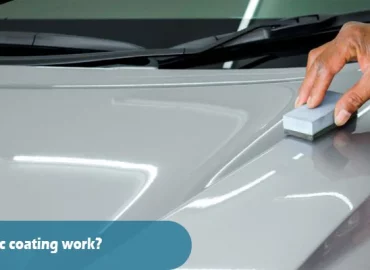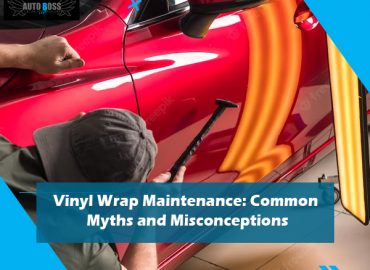Many questions arise in your mind when you think of ceramic coating. Like ceramic coating better than polishing or waxing? What are its advantages? Is it worth spending a handsome amount of money on ceramic coating? Repeatedly asking these questions resulted in increased confusion.
This article will take you through all the basic points of ceramic car coating. Keep on reading to make your concept clear about ceramic car coating once and for all.
Ceramic coating basics
Do you want your car’s appearance to look sporty? You want to try something permanent and effective. If you tried everything, such as daily washing or monthly wax, to get rid of scratches, dirt, grime and stain marks. Washing can come with additional swirl marks. Do you want a permanent solution for all this?
Ceramic coating is one step solution to get rid of regular maintenance. It is a solution from oxidation and etching. It may last for years. Ceramic coating is the best solution to prevent grime and dirt.
Ceramic coating
Ceramic coating is an industry-grade chemical solution. It is applied to the car’s exterior to protect it from paint damage. You can apply the ceramic coating by hand. It blends with the car paint, and it creates an additional hydrophobic protection layer.
Ceramic coating provides chemical bonding and creates a layer where the car’s paint remains undamaged.
Many car owners and detailers believe ceramic coating is an alternative to car protection film and waxing. The major idea is to prevent grime, dirt and stain marks. It helps in protecting the clear coat.
It is also known as a nano-ceramic coating. It is a semi-permanent or permanent solution depending on the polymer type and coating. It has intrinsic properties and does not break in a normal atmosphere.
Benefits of ceramic coating for glass
With a large variety of benefits of ceramic coating, some of the benefits are as follows.
Water repellency
The hydrophobic properties of ceramic coating ensure liquids roll down when it hits the surface. It prevents contaminants such as bird droppings and mud. It also prevents insects from sticking to the surface.
Reduces reflection and improves vision
Ceramic coating reduces light reflection and makes the driving process smooth. It helps to improve vision on a sunny day.
Improved visibility
The most significant benefit is that it improves visibility. On rainy days it seems difficult to see through the windshield even if you use a window wiper as well. Ceramic coating has amazing water repellency or water beading. Rain flows down faster, which makes driving easier in the rain.
Easier cleaning and maintenance
Once you get ceramic coating installed, contaminants rest on the coating top rather than covering the whole surface. Hence, making it easy to remove these contaminants by regular car wash.
Durability
The benefits of ceramic coating last up to one year. It means it can be the best addition to your car surface. Ceramic coating also enhances the paint’s durability. It is specifically designed to keep your car’s appearance sleek and beautiful.
Keep your car surface shiny
High-Quality ceramic coatings enhance the shine of the car surface, making it a proper choice for enhancing vehicle appearance and protecting it.
Enhanced clarity
The ceramic coating enhances clarity. If you get ceramic coating installed properly and leave no residue behind, it improves visibility. Ceramic coating provides UV resistance to reduce glare from the sun.
Scratch-resistance
Ceramic coating is scratch resistant. Your car’s original paint remains safe as ceramic coating creates a layer on it.
Alternative to wax
Applying ceramic coating on a car exterior, you don’t need to spend energy, time and money on sealing and waxing. It lasts longer than waxing. It forms a transparent, thin layer on your original paint surface that prevents oxidizing. The ceramic coating protects your vehicle from environmental contaminants.
Return on investment
While applying the ceramic coating, the return on investment is fast, as you can save your money spent on sealants and wax. Your car exterior is protected for a whole year.
Best ceramic coating
If you want ceramic coating on your glass, Drexler Ceramic glass coating is one of the best ceramic coatings. It is designed to cure glass surfaces better. It has water-repel properties. Other ceramic coatings include chemical guys Hydroslick SiO2 Ceramic coating, CarPro CQuartz UK 3.0, and Shine Armor Fortify Quick Coat.
Conclusion
The ceramic coating comes with a lot of benefits, including UV prevention, scratches that protect the light from entering the car, dust, spills and weather. Some of the ceramic coatings are easy to apply. You have to spray it on your car and buff it off with a clean cloth. It is not very difficult or complicated to apply ceramic coating. Auto Boss Vaughan recommends degreasing and washing the car of any silicones or waxes before applying the ceramic coating.
How can you apply a ceramic coating on the glass?
Ceramic coating provides a protective shield on the window glass. It keeps windows clean with improved water sheeting and glare reduction. It also improves UV protection. It reduces damage to the interior, like dashboards, inner trim pieces and seats.
Can I apply a ceramic coating on my glass?
We suggest getting the ceramic coating on the glass. If your windows appear dirty, the whole appearance of the car looks dirty.
Is ceramic coating good for the glass?
Yes! It is simple to apply ceramic coating on windows and windshields. However, it is a long-lasting solution for your car’s appearance. The ceramic coating may last for up to five years.
Explain the term ceramic-coated glass
The ceramic coating consists of particles of silicon dioxide and hard resin. It works to increase shine and repel contamination. It gives the car surface a wet look that is the most desirable in the car industry.
Which ceramic coating is long-lasting?
SiC based ceramic coating lasts longer and has a lot of benefits over other coatings. It has improved abrasion resistance, hardness, and high-temperature resistance. It has the best defense against water stains, chemicals and UV rays.




